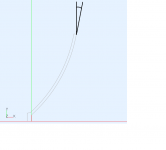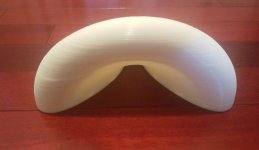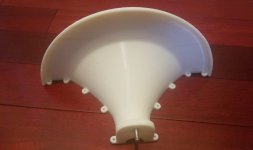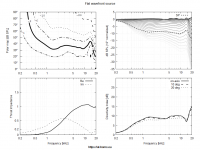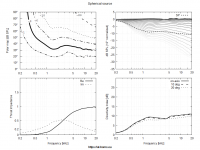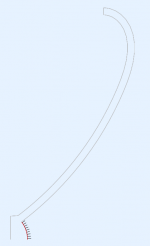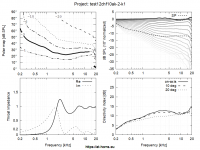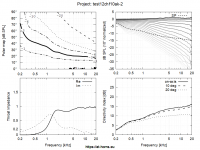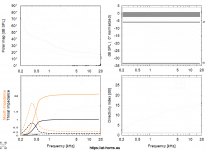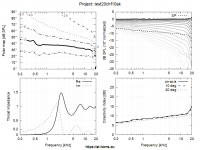It is this angle (10° here). Not all values may be possible in all situations.what exactly the "CircArc.TermAngle = " define? I've tried several values and did not notice any change nor in shape neither in results
Attachments
This has nothing to do with rollback (and I think the angle can't be less than zero - would have to check that). Rollback can be applied on any profile as the last step, from a specified point on the curve on. Then only the remaining length matters, not the actual shape of the underlying curve.
am I doing something wrong?
I put in script source shape, radius, curvature and velocity. Choose first flat disc and nothing change in results, second choose spherical cap, 44mm radius (value from some CD's), convex and axial velocity and again nothing change except the title
I put in script source shape, radius, curvature and velocity. Choose first flat disc and nothing change in results, second choose spherical cap, 44mm radius (value from some CD's), convex and axial velocity and again nothing change except the title
Looks a bit rough with 1mm nozzle. Is this to be expected or can I do way better with this size nozzle? Hopefully it's good enough for testing purposes.
I have no idea what you really did so it's hard to comment.am I doing something wrong?
I put in script source shape, radius, curvature and velocity. Choose first flat disc and nothing change in results, second choose spherical cap, 44mm radius (value from some CD's), convex and axial velocity and again nothing change except the title
As for the source shapes - the below pictures should be self-explanatory.
The whole difference is in adding "Source.Shape = 2 ; flat" in the second case.
The whole difference is in adding "Source.Shape = 2 ; flat" in the second case.
Attachments
Can you derive the mouth impedance? It would be interesting to see a plot of Re and Im for both mouth and throat in one and the same scart. Sorry, I'm an impedance fetishist 🙂
//
//
Å - thats a good question I suppose. Take the throat definition and apply it to the other end?
gedlee?
//
gedlee?
//
Mabat, regarding the post #5152, I found out making the OSSE k-parameter > 1 can smoothen out the response when there is the conical exit in the CD. Makes the beamwidth narrower as trade-off at least in my test case. Is there other ways to optimize WG for conical exit CD than smoothening the throat transition with k parameter? I have to make some more tests later.
First attachment postfixed with k1 is k=1, the other one is the same parameter set except k=5.
First attachment postfixed with k1 is k=1, the other one is the same parameter set except k=5.
Attachments
Last edited:
Mabat, regarding the post #5152, I found out making the OSSE k-parameter > 1 can smoothen out the response when there is the conical exit in the CD. Makes the beamwidth narrower as trade-off at least in my test case. Is there other ways to optimize WG for conical exit CD than smoothening the throat transition with k parameter? I have to make some more tests later.
First attachment postfixed with k1 is k=1, the other one is the same parameter set except k=5.
This is for the TAD TD-2001, or HF10AK?
You could further smoothen the opening (lowering the flare rate) by lowering α(lpha) and perhaps increase L.
k = 5 seems a nice tradeoff value, but k = 10 would probably work even better. In any case, it's hard to avoid beaming with the TD-2001.
Last edited:
- Home
- Loudspeakers
- Multi-Way
- Acoustic Horn Design – The Easy Way (Ath4)
